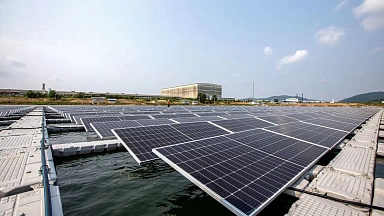This time of the year, ten years ago, the first China-Europe freight train left Chongqing in Southeast China, with its final destination being Duisburg in Germany. On its way to Europe, it crossed Kazakhstan, Russia, Belarus and finally Poland. In the beginning, it wasn’t branded as the China-Europe Express but as the Yu-Xin-Ou train or Chongqing-Xinjiang-Europe International Railway, which later developed to the most emblematic Eurasian connection.
Initial course
Many companies had experimented with direct services from China to Europe before 2011. For instance, back in 2008, Foxconn dispatched its first train connecting Shenzhen with Europe and later in 2009, DB Schenker started operating a weekly itinerary between Shanghai and Duisburg.
Hewlett Packard should get the credits for the first thoughts of connecting Chongqing with Europe using Kazakhstan, Russia, Belarus and Poland as transit countries. These initial plans occurred because the hardware company moved its production sites to the Chinese inland and was looking for new opportunities to transport its products westwards.
The proposal was well accepted by Chongqing’s regional government, which saw an opportunity to acquire a central role in trade and supply chains. Simultaneously, the formation of the Eurasian Economic Union between Kazakhstan, Russia and Belarus in 2011 facilitated the practical implementation of such plans.
Consequently, during the same year, the first trial trips started taking place, and a regular weekly service began the year after, mainly transporting HP’s products. Understandably, the first China-Europe Express train was a block train with a single shipper.
Further development
Later in 2015, the China Railway Express started taking a more central place in Eurasian transport. During that year, the Chinese government launched the ‘Vision and action to promote the construction of the Silk Road Economic Belt and the Maritime Silk Road in the 21st Century’ program. The specific plan provided the service with a more active role and its own land-based logistics channel on the New Silk Road initiative.
The following year, the China-Europe Express acquired its customised development program under the name ‘CRE construction and development plan (2016-2020)’. This plan identified the service’s development goals in a five-year timeframe. The service was gradually transforming into a vital component of China’s Belt and Road Initiative.
Starting from 17 yearly trains in 2011, the service skyrocketed to 6,363 trains in 2018. Moreover, during 2017, the train connected 59 Chinese cities to 49 European cities from 15 different countries. Until March 2019, these numbers became even more impressive since the train made around 14,000 trips during this year connecting 60 Chinese cities to 50 European ones.
China-Europe Express and the pandemic
Despite the initial fears of a total collapse due to the worldwide virus spread, the China-Europe express managed to keep its numbers high during 2020. With more than 12,000 trains, according to the Chinese Railways, the service kept Eurasian supply chains running seamlessly, while at the same time other modes of transport were facing enormous problems.
The route paved ten yeats ago has now acquired more participants taking the logistical and operational game to the next level. We see more European hubs like Liege and Amsterdam entering the club of EU destinations. Additionally, the transit countries along the route are continuously flourishing, with new options popping up. Countries like Azerbaijan, Georgia, Turkey, Iran, and Uzbekistan are entering the competition dynamically. Furthermore, in terms of border crossings on the European side, Ukraine was a leading player during 2020 since it successfully joined the EU alternative entry points group.
Nevertheless, the service also faced some hurdles, with the container shortage being among the most important. Even after the pandemic’s first wave, the export/import balance between Europe and China was disrupted. Specifically, in November, China was sending approximately ten full trains to Europe per week. On the other side, eastbound trains did not exceed the number of two each week. As a result, China ended up suffering from a severe shortage of containers, while at the same time, European ports were pilling them up. The issue of imbalances and container shortages constitutes one of the most critical things that need to be addressed by the rail sector in 2021.
What’s more to come?
One of the most awaited advances on the China-Europe Express service is the ban lift on dangerous goods transportation. Many operators of the line, like DB Cargo Eurasia, have expressed their hopes for such a development. However, China itself is now considering revising its transport rules. Much lobbying is also taking place in this direction. For example, Li Shufu, chairman of Geely Holding Group and a deputy to the Chinese National People’s Congress, brought up the topic in two separate congress sessions this year, pressing for a policy reform that everyone in the industry has been waiting for.
On top of that, Jet Young, Chief Representative in China at LLC Max Container, mentioned that the China-EU Investment Agreement is undoubtedly an essential piece of good news for the next stage of China-EU economic and trade cooperation. Both China and the EU will be able to enter each other’s broader market. The increase in China-EU bilateral trade will undoubtedly bring new sources of goods to China-EU Express. But how to effectively develop the European market and European partners’ participation will become more and more critical. «The China-Europe express trains must both go global and bring in. In the next step, relevant companies from both sides should conduct more in-depth cooperation on the overseas market development and product design of the China-Europe express trains. In fact, the number of European logistics companies using China-Europe Express trains is constantly increasing. With these foreign partners’ participation, the China-Europe Railway Express can become a community of interests and a community of destiny between China and Europe», he underlined.





